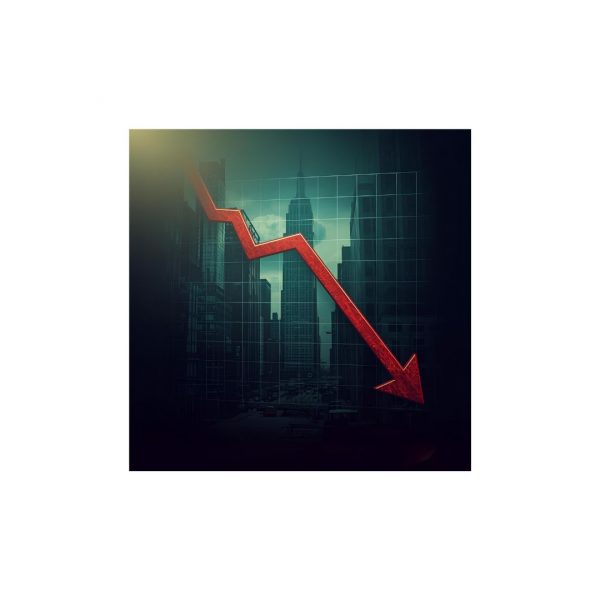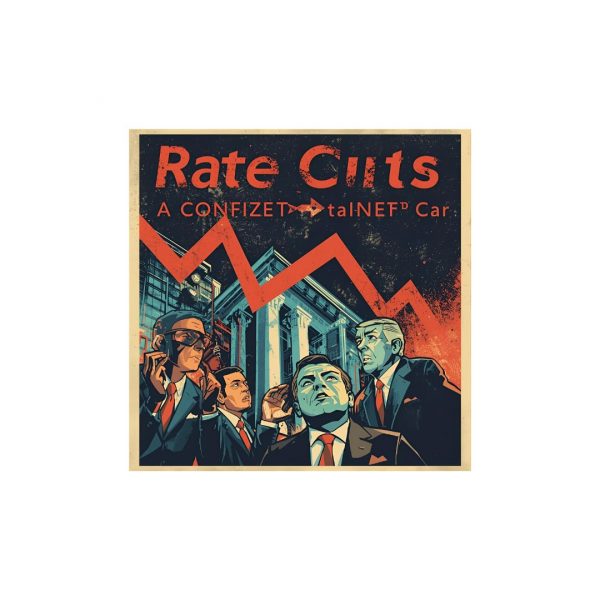Differences between ETFs and mutual funds.
Introduction
At first glance, Mutual Funds and ETFs (Exchange Traded Funds) might seem quite similar, as both allow you to invest in a diversified ‘basket’ of securities by pooling money from many investors. However, to understand which instrument is the most suitable for you, it’s essential to ask: What are the differences between ETFs and mutual funds? In this article, we will explore the key distinctions to give you a clear picture and help you navigate the world of investments.
The Main Differences between ETFs and Mutual Funds
While both instruments aim to invest in a diversified ‘basket’ of securities by pooling money from many investors, the way they operate in practice presents fundamental distinctions. Understanding these differences between ETFs and mutual funds is crucial for choosing which instrument best suits your investment needs and preferences.
How They Are Traded (Trading)
One of the most obvious differences concerns how you can buy or sell them. ETFs (Exchange Traded Funds), as the name suggests, are traded on exchanges exactly like company stocks. This means you can buy and sell them at any time during the financial market’s trading hours, and their price can change continuously in real-time based on the supply and demand at that moment. Traditional Mutual Funds, on the other hand, are not traded on exchanges. When you buy or sell them, you interact directly with the fund management company (or through an authorized intermediary like a bank or advisor). Buy and sell orders are executed only once a day, after the markets close, at the official price (value) set at the end of the day.
The Price (NAV vs Market Price)
This difference in trading method is also reflected in the price. For Mutual Funds, the price at which you buy or sell them is always the Net Asset Value (NAV) per share/unit, calculated once a day after market close. The NAV represents the total value of the investments held by the fund, divided by the number of shares/units outstanding. For ETFs, however, there is a market price that can fluctuate throughout the day as they are traded on the exchange, just like stocks. This market price is generally very close to the NAV (ETFs also calculate their NAV at the end of the day), but in times of high volatility or low liquidity, an ETF’s market price might deviate slightly from its real-time NAV.
Structure and Access
This distinction also affects structure and access. Buying an ETF is very similar to buying a stock: you do it through a brokerage account with an online broker or bank that provides access to stock markets. ETFs offer the flexibility of intra-day trading and constantly changing prices. Buying shares/units of a Mutual Fund is a different process, usually done directly through the fund management company’s sales network or through financial institutions that distribute those funds. The price is the same for all orders executed on a given day.
Management Style: Active vs. Passive and Costs
Another significant distinction between Mutual Funds and ETFs concerns the strategy used to manage the investments within them. There are two main approaches: active management and passive management. Understanding which is used directly impacts costs and expected returns.
Active Management
In active management, a team of professional managers actively seeks to “beat the market” or a benchmark index. These experts study economic trends, analyze individual companies or sectors, and make decisions on which securities to buy, sell, and when, attempting to achieve performance superior to a simple benchmark. This approach requires significant research, analysis, and frequent trading. Traditional “traditional” Mutual Funds are very often actively managed.
Passive Management
In passive management, the goal is not to beat the market, but simply to replicate as closely as possible the performance of a specific benchmark index (such as the S&P 500 index, a country’s government bond index, or a sector index). The passive manager simply buys the securities that make up the index, in the same proportions, and makes only the adjustments necessary when the index itself changes. This approach requires fewer active decisions and less trading than active management. ETFs are almost always (though not exclusively) passively managed. “Are ETFs actively managed?” The answer is that the vast majority are passive, but actively managed ETFs also exist, although they are less common than active mutual funds.
Costs Compared
The difference in management style has a direct impact on costs. Active management, requiring more work, analysis, and frequent trading, generally has higher management fees (Expense Ratio) compared to passive management. This makes sense: you are paying for the expertise and time of managers trying to achieve superior performance. Passively managed funds and ETFs, needing only to replicate an index, have significantly lower management fees. It’s important to consider that, in addition to annual management fees (Expense Ratio), ETFs also have trading costs (buy/sell commissions) every time you buy or sell them through your broker, just like with stocks. This is a cost to consider, especially if you plan to make many transactions. Mutual Funds might not have buy/sell commissions (“No Load” funds), but they often have higher annual management fees than passive ETFs.
The comparison between “ETFs vs active funds” is often precisely a comparison between passive management (typical of ETFs) and active management (typical of funds), where costs and the ability to beat the market are central themes. These are key differences between ETFs and mutual funds.
Advantages and Disadvantages Compared
Both ETFs and Mutual Funds offer undeniable advantages, but they also come with some potential disadvantages depending on your investor profile and goals. Let’s look at the main ones compared.
Advantages of ETFs
- Generally Lower Costs: Especially passively managed ETFs typically have significantly lower annual management fees (Expense Ratio) compared to most Mutual Funds, particularly actively managed ones.
- Trading Flexibility: You can buy and sell them at any time during stock market hours, like stocks. This gives you more control over execution prices.
- Transparency: The composition of an index-tracking ETF is generally very transparent and known daily.
- Tax Efficiency: The structure of ETFs tends to generate fewer taxable events related to internal capital gains distributions compared to Mutual Funds, which can be an advantage in non-tax-deferred portfolios (as in countries where there is no preferential tax regime for certain types of investments).
- Low Minimum Investment: You can often start investing in an ETF by purchasing even just one share, the cost of which is usually very accessible.
We can say that for many investors, especially long-term beginners focused on costs, ETFs are often considered a good investment due to the listed advantages. Understanding these advantages helps highlight the differences between ETFs and mutual funds.
Disadvantages of ETFs
- Trading Costs: Every time you buy or sell an ETF, you might have to pay trading commissions to your broker (although many online brokers now offer commission-free trading on many ETFs).
- Bid-Ask Spread: Being traded on exchanges, ETFs have a buy price (Ask) slightly higher than the sell price (Bid). This small difference (the spread) is an implicit cost, usually minimal for the most liquid ETFs but can be higher for less traded ones.
- Potential Deviation from NAV: In rare cases or extreme market conditions, an ETF’s market price might temporarily deviate from its Net Asset Value.
- Need for a Brokerage Account: To buy ETFs, you need a brokerage account that allows trading on exchanges.
Advantages of Mutual Funds
- Wide Range of Options: Being an older instrument, there is a very wide range of Mutual Funds available with different strategies and objectives.
- Easier Access: It’s often easier to access them through your bank or a network of traditional financial advisors, which can be reassuring for some investors.
- Potential Professional Active Management: For those who believe an experienced manager can outperform the market, actively managed funds offer this possibility (though, as discussed, it is not guaranteed and comes with higher costs).
- Simple Automatic Investment Plans: Many Mutual Funds are well-suited for regular automatic investment plans.
Disadvantages of Mutual Funds
- Generally Higher Costs: Especially actively managed ones, Mutual Funds tend to have higher annual management fees (Expense Ratio) than passive ETFs. They may also have entry fees (subscription fees) or exit fees.
- Less Trading Flexibility: Transactions are executed only once a day at the closing NAV, without the ability to control the execution price during the day.
- Potential Tax Inefficiency: Active management can more frequently generate internal capital gains distributions within the fund, which are then taxed to the investor even if they haven’t sold their shares.
Different Types of ETFs and Mutual Funds
Both ETFs and Mutual Funds are not single products but are divided into numerous categories based on what they invest in. This variety allows investors to choose the instrument most suited to their goals and risk tolerance. Understanding the different types is part of grasping the differences between ETFs and mutual funds.
Main Types of ETFs
What are the 3 main types of ETFs? Although many categories exist, we can say that among the most common types of ETFs are those that invest in:
- Stocks (Equity ETFs): Replicate the performance of stock indices (such as the S&P 500, global indices, sector indices, etc.).
- Bonds (Bond ETFs / Fixed Income ETFs): Replicate the performance of bond indices (such as government bond indices, corporate bonds, etc.).
- Commodities (Commodity ETFs): Replicate the performance of commodity prices (such as gold, oil, agriculture).
Many other types also exist, such as sector-specific ETFs (only technology, healthcare, etc.), geographical ones (only one country or region), or those with more specific strategies.
Main Types of Mutual Funds
Mutual Funds are also divided into similar categories based on the assets they primarily invest in:
- Equity Funds: Primarily invest in stocks of various companies. They are further subdivided by geographical area (Italy, Europe, Global), sector, or company size (large cap, mid cap, small cap).
- Bond Funds: Primarily invest in bonds. These also differ by issuer (government, corporate), geographical area, maturity (short, medium, long term).
- Balanced Funds: Invest in a combination of stocks and bonds, with varying percentages depending on the risk profile.
- Money Market Funds: Invest in very short-term, low-risk financial instruments, often used for parking liquidity.
For Mutual Funds too, there are more specific categories like real estate funds or flexible funds. The range is vast.
How to Choose: ETF or Mutual Fund?
After analyzing the differences between ETFs and mutual funds, their advantages, and disadvantages, the question that naturally arises is: “Mutual Fund or ETF? Which is the right choice for me?” The answer, as often happens in personal finance, is not a single, universal one. It depends heavily on your specific needs, your investment goals, your risk tolerance, and how you prefer to operate in the market.
Here are some factors to consider to help you decide:
- Costs: If costs are your absolute priority and you are comfortable buying and selling on an exchange, passively managed ETFs are often the more economical option due to their low annual management fees. However, also consider the trading costs for ETFs.
- Management Style: Do you prefer a passive approach that tracks an index, or do you believe an active manager can outperform the market (even with higher costs)? Your preference will guide you towards passive ETFs or Mutual Funds (or even active ETFs).
- Trading Flexibility: If it’s important for you to be able to buy and sell at any time during the stock market day, the ETF offers this flexibility, unlike the single daily price of Mutual Funds.
- Minimum Investment: Check the minimum investment amounts required. ETFs usually allow you to start with just a few dozen or hundred euros (the cost of one share), while some Mutual Funds might require higher minimum amounts.
- Access and Operational Simplicity: Are you more comfortable trading online through a broker (for ETFs) or do you prefer to go through your bank or a traditional advisor (often the preferred channel for Mutual Funds)? Consider the platform and support offered by different intermediaries.
- Tax Efficiency: While it can be a complex aspect, the tax efficiency of ETFs compared to actively managed Mutual Funds can be an important factor for some long-term investors.
In summary, there is no absolute winner between Mutual Fund or ETF. Both are excellent tools for diversification. Passive ETFs are often ideal for those seeking low costs, transparency, and trading flexibility. Mutual Funds (even passive ones) can be a good choice for those who prefer more traditional management through a bank or seek the opportunity (though not guaranteed) of active management, accepting potentially higher costs. The important thing is to be well-informed and choose consciously based on the differences between ETFs and mutual funds and your needs.
Looking for ETFs with an Eye on Past Returns (and why to be cautious)
Many investors, understandably, look for the “best ETFs” and tend to examine their past returns to guide their choices. It’s natural to want to invest in something that has shown it “works”. However, it is crucial to approach this aspect with great caution.
Why past returns are not a guarantee for the future:
The return an ETF (or any other investment) has achieved in the last 1, 3, 5, or 10 years only tells you what happened in that specific period, under those specific market conditions. There is no certainty, nor even a mathematical probability, that the same will happen in the future. Markets change, economic conditions evolve, and past performance is not predictive of future performance.
How investors look at past returns (with caution):
Even knowing they are not a guarantee, investors often look at past returns over different time windows (e.g., 1 year, 3 years, 5 years, since inception) to get an idea of how the ETF has performed in different market phases. It is more useful to look at annualized returns (the average return on an annual basis over a certain period) rather than the total return over long periods.
More important than a single high return is understanding what led to that return (did it track an index that performed very well? Does it have a specific strategy?) and evaluating volatility (how much the price has fluctuated).
Examples of what investors look for (not investment advice!):
When looking for performance, investors often examine ETFs that track global stock indices or major markets (like an ETF on the S&P 500 index or an ETF on the MSCI World index), or benchmark bond indices. These are examples of very popular and often analyzed ETF categories for their historical performance, but this does not automatically make them the “best” for your situation.
Where to find updated information on returns:
To find updated performance data on ETFs and compare them based on your criteria (investment type, geographical area, costs, etc.), you can use online brokerage platforms or specialized websites that offer screening and comparison tools. Always look for reliable sources and updated data.
We will delve into how to read and interpret all the important parameters of an ETF (such as Expense Ratio, tracking difference, liquidity, etc.) in a future dedicated article.
FUNDAMENTAL DISCLAIMER: Information on past returns and examples of ETF categories provided in this section are for purely illustrative and general informational purposes. They do not in any way constitute investment recommendations or personalized financial advice. Investment decisions must be based on your financial situation, goals, and risk tolerance, and require thorough analysis or consultation with a qualified and independent professional. Past returns are not indicative of future returns.
Conclusion
In summary, we have seen that, despite appearances, there are important differences between ETFs and mutual funds when asking: What are the differences between an ETF and a mutual fund?
We explored how they are traded (on exchange for ETFs, end-of-day for Mutual Funds), their different management styles (predominantly passive for ETFs, often active for Mutual Funds), and the impact this has on costs. We also looked at their respective advantages and disadvantages, and the main types into which they are divided.
The choice between an ETF and a Mutual Fund does not have a single right or wrong answer; it depends on your specific needs, your preference for costs or active management, and how you prefer to operate in the markets.
Both instruments offer excellent diversification opportunities and can simplify access to the world of investments compared to selecting individual securities. The important thing is to be well-informed, understand the instrument you choose, and align it with your financial goals.
We hope this guide has provided you with a clearer picture to navigate between these two popular investment options.






